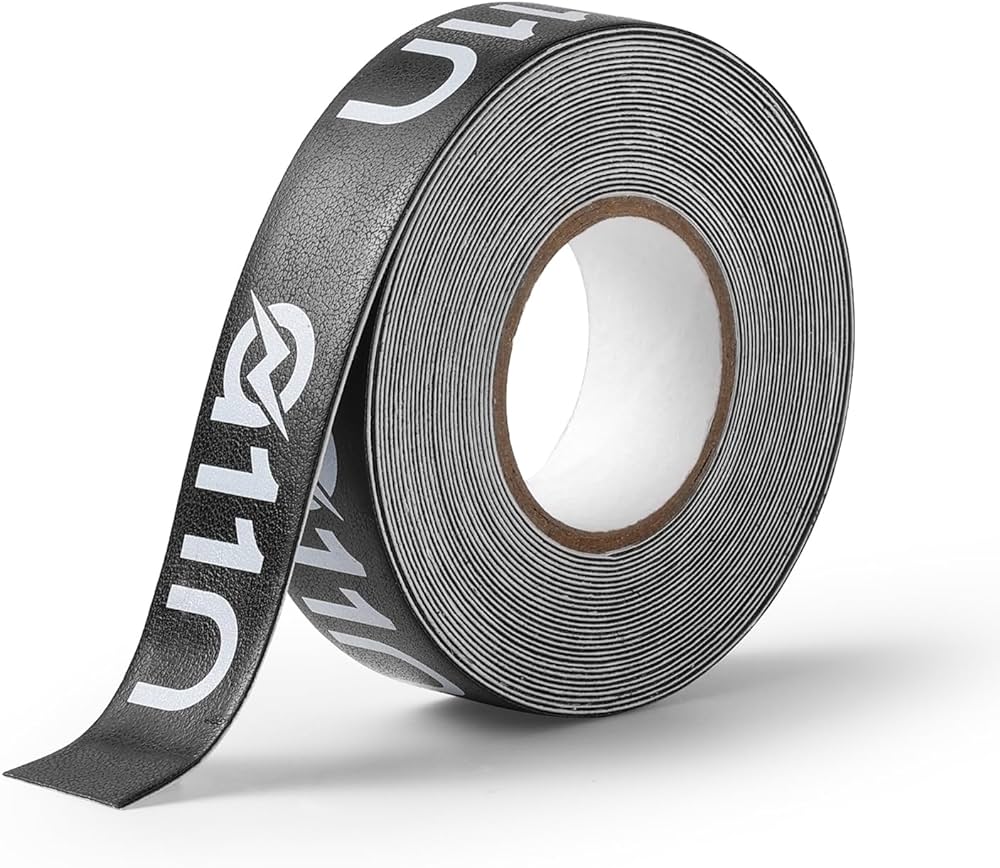A pickleball paddle typically lasts for around 2-3 years with regular use. Pickleball has gained immense popularity in recent years, attracting players of all ages and skill levels.
One crucial aspect of the game is the pickleball paddle, which is used to strike the ball back and forth across the net. Many players wonder how long a pickleball paddle lasts before needing to be replaced. We will provide an accurate answer to this question and explore factors that affect the lifespan of a pickleball paddle.
Whether you’re a seasoned player or just starting out, understanding the durability of your paddle is essential to your overall playing experience. So, let’s dive in and find out how long a pickleball paddle is likely to last.

Credit: www.youtube.com
Factors Affecting Pickleball Paddle Lifespan
When it comes to the lifespan of a pickleball paddle, several factors come into play. Understanding these factors can help you determine how long your pickleball paddle may last and when it’s time for a replacement. Here are the key factors that can affect the lifespan of a pickleball paddle:
Material Quality And Durability
The material quality and durability of a pickleball paddle play a crucial role in its overall lifespan. High-quality paddles made from durable materials such as carbon fiber or composite materials tend to last longer compared to paddles made from lower-quality materials. These materials are known for their strength, resistance to wear and tear, and ability to withstand the rigors of intense gameplay.
Frequency And Intensity Of Use
The frequency and intensity of use can significantly impact the longevity of your pickleball paddle. Paddles that are used more frequently and in intense gameplay sessions are more likely to experience wear and tear at a faster rate. Regular and intense use can cause paddle surfaces to wear out, affecting their performance and overall lifespan.
Care And Maintenance Practices
The care and maintenance practices you follow can extend the lifespan of your pickleball paddle. Proper care includes cleaning the paddle after each use, storing it in a protective case or bag, and avoiding exposure to extreme temperatures or moisture. Neglecting proper care and maintenance can lead to premature deterioration of the paddle’s materials and decrease its overall lifespan.
Cleaning And Storing
Cleaning and storing your pickleball paddle correctly can significantly impact its lifespan. After each use, wipe down the paddle’s surface with a damp cloth to remove dirt and sweat. Avoid using harsh chemicals or abrasive materials that can damage the paddle’s surface. Additionally, store the paddle in a dry and cool place, away from direct sunlight or extreme temperatures, to prevent warping or damage to the materials.
Grip Replacement
Over time, the grip of a pickleball paddle may become worn out, affecting your ability to maintain a firm hold during gameplay. Regularly inspecting the grip and replacing it when necessary can help prolong the lifespan of your paddle. Consider using a high-quality replacement grip that provides comfort and durability, ensuring optimal performance during your pickleball games.
By considering these factors and implementing proper care and maintenance practices, you can help extend the lifespan of your pickleball paddle and ensure it continues to perform at its best for as long as possible.
Signs Of A Worn-out Pickleball Paddle
Deterioration Of Paddle Surface
A worn-out pickleball paddle can often be identified by the deterioration of its surface. Over time, the paddle’s surface can become worn down or damaged, affecting its overall performance. The once smooth and consistent surface may develop deep scratches, indentations, or even peeling layers of material.
Loss Of Performance And Control
One of the most noticeable signs of a worn-out pickleball paddle is a loss of performance and control during gameplay. As the paddle surface deteriorates, it may become less responsive, resulting in reduced ball control and accuracy. Players may find it more challenging to generate spin on their shots and maintain consistent power.
Cracks Or Chips In The Paddle
Another indicator of a worn-out pickleball paddle is the presence of cracks or chips. As the paddle ages, it becomes more prone to structural damage. Cracks can appear near the edges or in the paddle’s core, compromising its integrity. Chips, on the other hand, may occur from accidental impacts or wear and tear. These cracks or chips can affect the paddle’s overall performance and, if left unaddressed, may lead to further damage.
Recognizing these signs is crucial in determining when to replace your pickleball paddle. Once your paddle starts showing visible signs of wear and tear, it’s time to consider investing in a new one to ensure you maintain the best performance on the court.
Tips For Extending The Lifespan Of A Pickleball Paddle
Invest In A High-quality Paddle
One of the best tips for extending the lifespan of your pickleball paddle is to invest in a high-quality paddle right from the beginning. High-quality paddles are typically made with durable materials that can withstand the wear and tear of regular gameplay. Look for paddles that are made of carbon fiber or composite materials, as these tend to be more durable and long-lasting.
Avoid Excessive Use On Rough Surfaces
Another important tip to prolong the lifespan of your pickleball paddle is to avoid excessive use on rough surfaces. Rough surfaces, such as concrete or abrasive court surfaces, can cause faster wear and tear on the paddle. Instead, try to play on smoother surfaces like indoor courts or resurfaced outdoor courts. If you do find yourself playing on a rough surface, consider using a protective cover or sleeve to minimize damage.
Use Edge Guards For Protection
Using edge guards is another effective way to protect your pickleball paddle and extend its lifespan. Edge guards are rubber or plastic strips that attach to the edges of the paddle, providing extra protection against accidental hits and scruffs. They help prevent chips and scratches on the paddle surface, which can affect its performance over time. Make sure to choose edge guards that fit your paddle snugly for maximum protection.
Maintain Proper Paddle Care Routines
Maintaining proper care routines is essential to ensure the longevity of your pickleball paddle. After each game or practice session, wipe down your paddle with a damp cloth to remove any dirt or sweat. Avoid using harsh chemicals or abrasive cleaners that can damage the paddle’s surface. Additionally, store your paddle in a protective case or cover when not in use to prevent accidental damage.
Regularly inspect your paddle for any signs of wear and tear. Pay attention to the grip, handle, and paddle surface for any visible damages such as deep scratches or loosening grip. If you notice any signs of wear, it might be time to consider replacing your paddle to maintain optimal performance on the court.
By following these tips and adopting good paddle care habits, you can significantly extend the lifespan of your pickleball paddle and ensure that it continues to perform at its best for a longer period of time.
When To Replace A Pickleball Paddle
htmlA pickleball paddle, like any other sports equipment, has a certain lifespan. Over time, continuous use and wear and tear can affect its performance and gameplay. As a player, it’s important to know when it’s time to replace your pickleball paddle to ensure you maintain control and enjoy optimal gameplay.
When It Affects Gameplay And Performance
One of the first signs that it’s time to replace your pickleball paddle is when it starts to affect your gameplay and performance. A worn-out paddle may not provide the same level of control and power as it used to. You may notice that shots are not as accurate, balls are not being hit with the same force, or your overall performance is declining.
When Paddle Damage Becomes Significant
Another key indication that it’s time for a new paddle is when the damage becomes significant. Deep scratches, chips on the edges, or a loosening grip can all signify wear and tear. These visible damages not only affect the aesthetics of the paddle but can also impact its functionality. When you start to see these signs of damage, it’s a clear indication that a replacement is necessary.
When The Paddle No Longer Provides Control
The most crucial aspect of playing pickleball is control. If your paddle is no longer providing the level of control you need to execute shots with precision, it’s time to consider a new paddle. A worn-out paddle might not grip the ball as it used to, leading to decreased spin or control. This can greatly impact your gameplay and overall enjoyment of the sport.
Recognizing when to replace a pickleball paddle is essential for maintaining optimal gameplay and performance. Pay attention to signs such as reduced ball control, altered sound, and visible damages. When these indicators start to manifest, it’s time to invest in a new pickleball paddle to continue playing at your best.
Frequently Asked Questions On How Long Does A Pickleball Paddle Last
How Do You Know When A Pickleball Paddle Is Worn Out?
Recognizing signs of a worn-out pickleball paddle is important. Look for reduced ball control, altered sound, and visible damages like deep scratches or chips. Upgrading may be necessary if there is excessive wear and tear that affects performance. To prolong paddle life, store it properly and avoid unnecessary tapping or clinking.
How Many Games Does A Pickleball Paddle Last?
A pickleball paddle can last for a varying number of games, depending on usage and maintenance. Signs of wear and tear include reduced ball control, altered sound, and visible damages like scratches or chips. To extend the paddle’s lifespan, store it properly and avoid unnecessary impact.
When Should I Upgrade My Pickleball Paddle?
Upgrade your pickleball paddle when you notice excessive wear and tear, such as chips, cracks, or peeling. The paddle’s performance may be affected, so it’s important to upgrade for better play. Store your paddle in a bag or backpack when not in use to prolong its lifespan.
How Do I Make My Pickleball Paddle Last Longer?
To make your pickleball paddle last longer, store it in a pickleball bag when not in use and avoid tapping or clinking it with your opponent’s paddle.
Conclusion
To ensure your pickleball paddle lasts longer, follow these tips. Store your paddle in a bag or backpack when not in use to prevent scratches. Avoid tapping or clinking paddles with your opponents, as this can wear down the lifespan.
Additionally, pay attention to signs of wear, such as reduced ball control, altered sound, and visible damage. By taking proper care of your paddle, you can enjoy its performance for an extended period.

